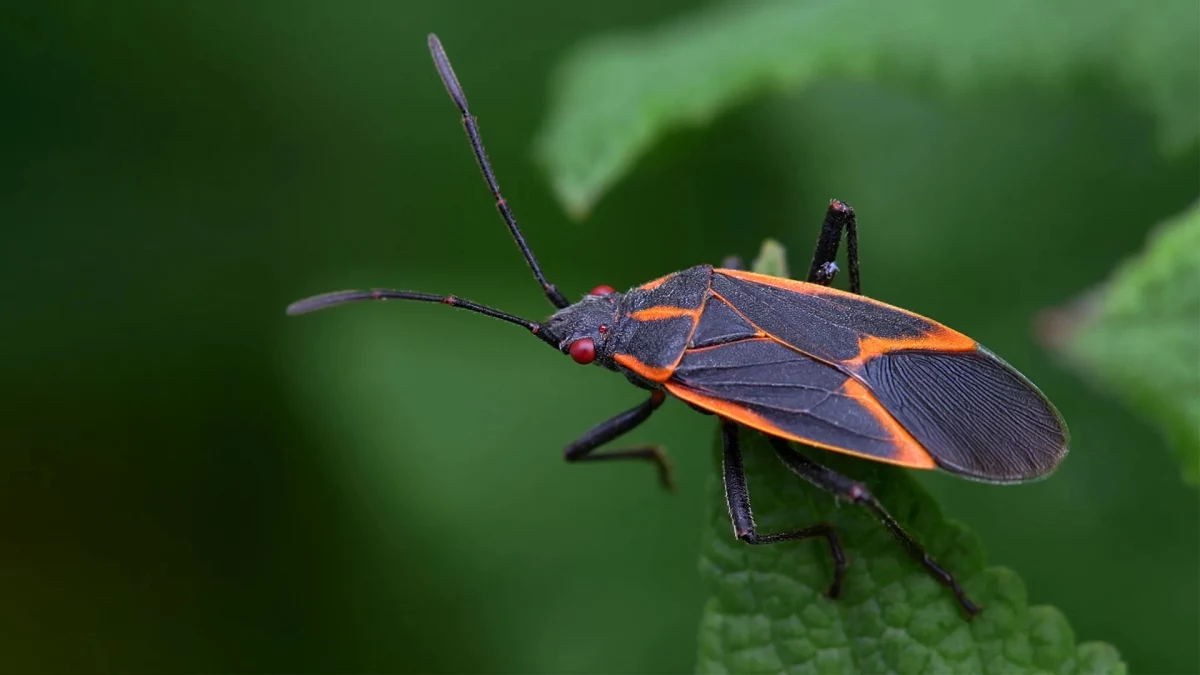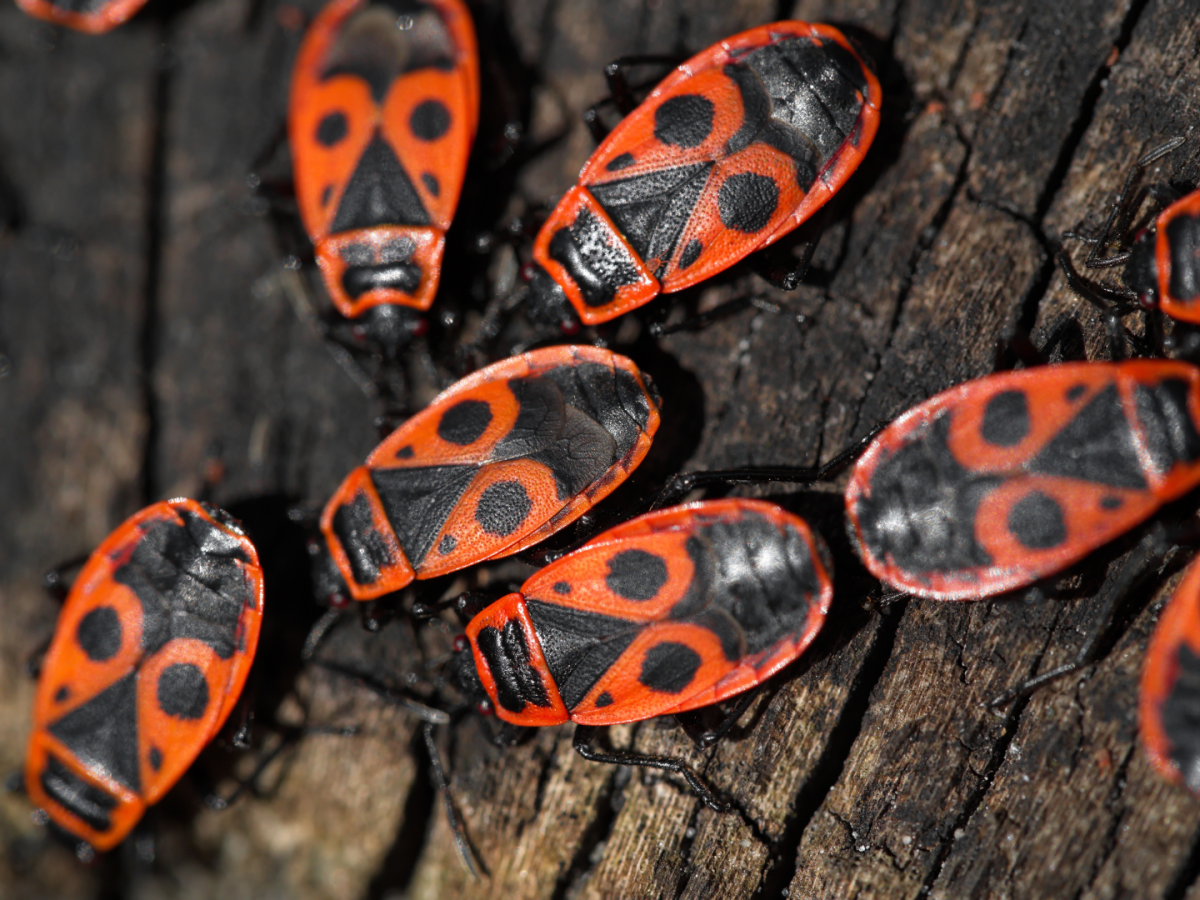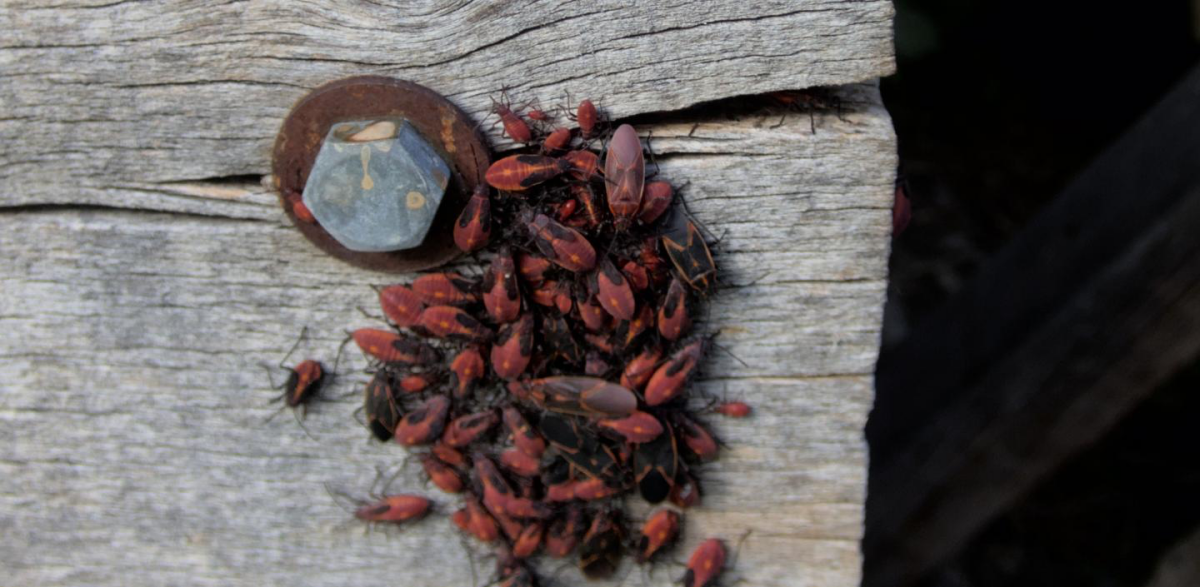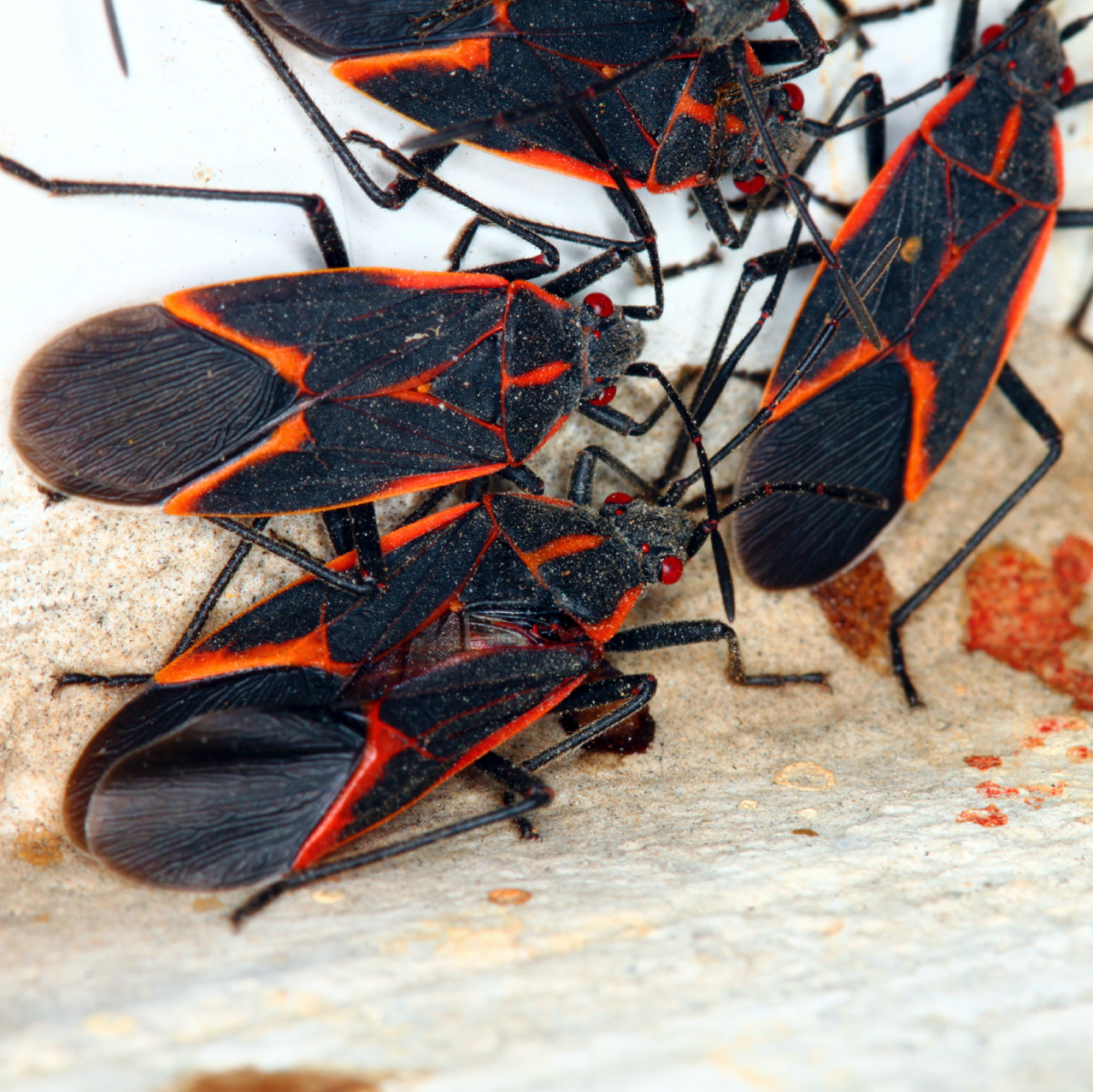Why Boxelder Bugs Are Invading Your House (And How to Stop Them for Good)
Every year, it starts like clockwork. Right around the time the air gets that first crisp, autumn feel, my phone starts ringing with the same familiar panic. “They’re back,” the voice on the other end says, and I can almost hear them shuddering. “The black and red bugs. They’re covering the sunny side of my house.” I don’t even have to ask. It’s boxelder bug season.
In this article
But before we dive deep, let’s handle the immediate crisis. Are you feeling totally overwhelmed right now?
Your 15-Minute Emergency Fix
If your walls are currently a moving carpet of bugs, do this right now. Seriously, stop reading and go do this:
- Inside the house: Grab your vacuum cleaner. Use the hose attachment to suck up every bug you see. It’s fast, and it avoids that nasty smell they release when squished. I’ll share a pro tip for this later to keep your vacuum from getting stinky.
- Outside the house: Mix about two tablespoons of simple dish soap into a gallon of water in a spray bottle or garden sprayer. Go outside and douse those big clusters on your siding. It’s a temporary contact killer, but it will knock down the population and restore your sanity.
Okay, feeling a little better? Good. That’s just triage. Now let’s talk about how to win the war.

To be clear, these insects aren’t dangerous. They don’t bite, sting, or chew through your home’s structure. But honestly, that doesn’t matter much when thousands of them decide your living room is the perfect winter vacation spot. Their droppings can stain curtains and siding, and the sheer sight of them is enough to drive anyone crazy. My job isn’t just about pest control; it’s about giving people back their peace of mind.
Think Like a Bug to Beat the Bug
The number one mistake I see homeowners make is waiting until it’s too late. To really get a handle on boxelder bugs, you have to understand their simple, predictable yearly plan. They’re not complicated creatures.
In the spring, the adults that survived winter crawl out from their hiding spots (like your wall voids, attics, or under leaf litter) and head straight for their favorite food source: female, seed-bearing boxelder trees. They’ll also hang out on other maples or ash, but the female boxelder is their prime real estate. They feast on the leaves and seeds, mate, and lay eggs.

Throughout the summer, these eggs hatch into bright red babies (called nymphs) that you’ll see crawling all over the tree trunk and leaves. At this stage, they’re mostly just minding their own business.
The real trouble starts in late summer and early fall. As the days get shorter and cooler, a powerful instinct tells them to find a warm, safe place to ride out the winter. They are drawn to heat and light, which is why they gather in those massive, creepy swarms on the south and west-facing walls of your house. They’re literally sunbathing while searching for any tiny crack or crevice to get inside. Once they’re in your walls, the problem gets a whole lot harder to solve.
Your Mission: Find Their Super-Highways
The very first thing a pro does is a thorough exterior inspection. You have to look at your house from a bug’s perspective. A tiny crack you’d never notice is a wide-open invitation for them. So, grab a good flashlight and walk the perimeter of your home. Here’s what you’re looking for:

- Around the Foundation: Look for any cracks in the concrete, especially where the wood structure of your house sits on top.
- Utility Lines: This is a major one. Carefully check where pipes, cables, and AC lines go into your house. These spots are often sealed poorly, if at all.
- Siding Gaps: Vinyl siding is basically a bug paradise. Check for gaps where the siding meets windows, doors, and corner trim. Look under that bottom edge, too.
- Weep Holes: If you have a brick house, those little gaps left in the mortar for moisture to escape are direct pathways into your walls for pests.
- Windows and Doors: Check the weather stripping and caulk. Are your screens torn or do they fit loosely? It’s an obvious entry point we often overlook.
- Up High: Don’t forget to look up! Gaps where the walls meet the roofline (the soffits and eaves) or unscreened attic vents are easy entry points.

The Pro’s Layered Defense Plan (That You Can Actually Do)
A good pest management plan isn’t about one magic spray. It’s a series of smart steps that work together. We call it Integrated Pest Management (IPM), and it always prioritizes non-chemical methods first.
Layer 1: Armor Up Your Home (Exclusion)
I cannot say this enough: you will NEVER spray your way out of a persistent boxelder bug problem. Sealing their entry points is the single most important thing you can do. It’s more work upfront, but it’s a permanent fix.
Here’s your DIY exclusion shopping list. You can seriously armor up an average house for under $50.
- Quality Exterior Silicone Caulk (~$8-$12 a tube): For gaps up to a quarter-inch wide around windows, doors, and trim. Get the good stuff that stays flexible with temperature changes.
- Low-Expansion Spray Foam (~$10 a can): Perfect for larger gaps around pipes. Heads up! Make sure it’s the “windows & doors” low-expansion type. The high-expansion stuff can actually warp frames.
- Copper Mesh (~$15 a roll): For plugging weep holes in brick. Pests can’t chew through it, but it still lets air and moisture move, which is what the holes are for. Steel wool works too, but copper never rusts.
From my experience, people who invest a Saturday in sealing up their home see a massive reduction in bugs the next fall. It just works.

Layer 2: Make Your Yard Less Inviting
This is all about reducing the attraction. Since their main food and breeding ground is the female boxelder tree, that’s the first place to look.
Quick tip: Not sure if your tree is the problem? The female trees are the ones that produce those little winged “helicopter” seeds in the spring and summer. If you see those, that’s your culprit. Male trees just have pollen.
Removing a mature tree is a big step, but if it’s within 20 feet of your house, getting rid of it will dramatically cut down the bug population. But what if it’s your neighbor’s tree? That’s a common frustration. You can’t force them to cut it down, so your best bet is to be extra diligent about sealing your own home. A friendly chat might also work—they might be having the same bug problem and be open to splitting the cost of removal with an arborist.

Oh yeah, and a simple cleanup helps. Rake up leaf litter and debris from around your foundation. Those piles are perfect hiding spots for bugs as they case your house for entry points.
Layer 3: Simple, Low-Tox Removal
Even with a sealed house, some bugs will get in. Here’s how to deal with them without calling in the big guns.
- The Vacuum Trick, Upgraded: A vacuum is your best friend. Remember that pro tip I mentioned? If you have a canister vacuum, put a nylon stocking over the end of the tube and secure it with a rubber band before putting the attachment on. The bugs get trapped in the stocking. You can then just take it outside, tie it off, and toss it. This keeps your vacuum from smelling like dead, stinky bugs. Using a Dyson or other bagless vacuum? No problem. Just empty the canister into a sealable plastic bag immediately after you’re done and get it in the outside trash.
- The Soap & Water Spray: That mix of dish soap and water works because the soap breaks down the bug’s waxy outer shell, causing it to dehydrate. It’s great for spraying clusters on your siding or the stray bug indoors. Just remember, it only works on bugs you directly hit, and it has zero lasting effect.

Layer 4: The Chemical Barrier (When Necessary)
When you have extreme pressure, a targeted chemical application is the final step. This is where timing and product choice are everything.
Timing is critical. The best time to spray is in late summer or early fall, before the bugs start their mass invasion. Depending on where you live, this could be anywhere from late August to late September. The goal is to create a barrier they have to cross to get to your house.
For DIYers, look for outdoor insect control products at your local hardware store (like Home Depot or Lowe’s) that list boxelder bugs on the label and contain active ingredients like bifenthrin, deltamethrin, or lambda-cyhalothrin. These are what the pros use, just in different concentrations. Always, ALWAYS read and follow the label instructions for mixing and application.
Now, for a professional treatment, you’re looking at a different level of service and cost. A professional exterior barrier spray for an average-sized house will probably run you between $175 and $350. If you need a full exclusion job where a pro comes and seals everything, that’s much more labor-intensive, and you could be looking at $400 to $800 or more, depending on the condition of your home.

What if They’re Already in the Walls?
Sometimes, despite your best efforts, they make it inside the wall voids or attic. This is a tough spot. Spraying your baseboards is a waste of time and money; the bugs are safely behind the drywall. This is not a DIY job. A pro will have to drill very small, discreet holes and inject a fine insecticidal dust into the wall cavity. This dust circulates and coats the area, and it remains effective for a long time as long as it stays dry. It solves the problem without spraying chemicals all over your living space.
Watch Out for Look-Alikes!
It’s good to know what you’re dealing with. Other bugs can be mistaken for boxelders, like the Red-shouldered Bug. More importantly, in some areas, the invasive Spotted Lanternfly has similar habits.
Quick ID: Look at the area right behind the bug’s head. A boxelder bug has three distinct, simple red lines. A Spotted Lanternfly has black spots on its wings. If you see spots, that’s a whole different problem—that’s a destructive pest that you should report to your state’s department of agriculture immediately.

A Final, Honest Word
Let’s be realistic. No treatment is a magic force field. Even with a top-tier professional service, you might still see a few boxelder bugs sunning themselves on your exterior walls. The goal is to reduce their numbers to a level you can live with and, most importantly, to keep them from getting inside your home.
Managing these bugs is a seasonal challenge, for sure. But by understanding them and using a layered, proactive approach, it’s a battle you can absolutely win. And it all starts with that simple walk around your house, long before the first chill of fall arrives.
Galerie d’inspiration

You mentioned a pro tip for vacuuming boxelder bugs without making the whole machine stink. What is it?
This little trick is a game-changer. Before you start, cut a section from an old pair of pantyhose or a knee-high stocking. Place it into the end of your vacuum cleaner’s hose, draping it inside, and then secure the outer edge with a rubber band before attaching the wand. The suction will pull the bugs into the stocking, trapping them. When you’re finished, you can simply remove the stocking, tie it off, and dispose of it outside. Your vacuum canister or bag remains completely clean and, more importantly, odor-free.










